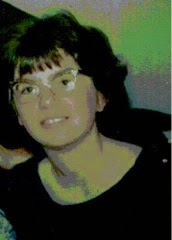When our mother, Mary Pretty, received her license, she achieved an independence she had not known since Dad's death. She was free to come and go at her leisure, not having to rely on others for a ride. Mom was delighted with her new freedom.
Several years after she had her license, she moved into my brother's lovely basement apartment. The house bordered a green belt at the back yard in Southlands, Newfoundland. The apartment had two bedrooms and large windows, so it was bright and comfortable. Mom was very happy there.
The driveway was on the same side of the house as the six steps that led to her apartment door. A few feet from the end of the driveway, the land dropped off so that the windows in the apartment were well above ground. Mom was nervous stopping at the end of the driveway because the land sloped down to the back yard. However, the houses were not as close to each other as they often are in many subdivisions.
Shortly after she moved into her apartment, Mom arrived home one day and did not stop as she came to the end of the driveway. She went down over the bank and eventually stopped in the back yard. Somehow, she steered between the houses and stopped without hurting herself or damaging the car or the houses.
Frank got a call at work to come home as soon as he could, though it was not an emergency. When he arrived home, Frank could not believe what he saw; Mom's car was so far down in the back yard. It looked like it took work to get the car down there.
After checking to see that she was alright, he asked, "How did you get down here, Mudder?"
"I don't know, b'y. Pressed on the gas, I s'pose," was the reply. Apparently it did not
take much work after all.
Frank asked, "What were you thinking as you went over the bank?"
"I was praying, out loud, the whole way down," she said. Prayer helped Mom through many an adventure.
She was heard to say, "Sacred Heart of Jesus," on more than one occasion. It was one of her invocations that day as well.
Curious, Frank asked, "What did you do when you finally stopped in the back yard?"
"I got out, closed the door, looked around and came in the house," said Mom.
How were they going to get the car out of the yard? It could not come out the way it went down there. Luckily, the area did not have fenced yards and the ground was level. Frank, with the neighbours' permission, drove the car across their back yards and onto the road.
Everyone laughed about it as did Mom, eventually. She continued to be nervous pulling into the driveway but did not have any further such rides.
Not there anyway.
















































